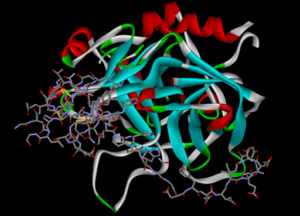 Fiber Bragg grating technology (FBG technology) offers fiber optic sensors that allow carrying out the measurement of such parameters like temperature and/or mechanical strain. However, the high cost of fiber sensing systems is considered to be a major disadvantage for commercial applications.
Fiber Bragg grating technology (FBG technology) offers fiber optic sensors that allow carrying out the measurement of such parameters like temperature and/or mechanical strain. However, the high cost of fiber sensing systems is considered to be a major disadvantage for commercial applications.
It should be noted that the popularity and fast growth of fiber optic technology for sensing applications promote numerous research in various areas, for example, industry, medicine, aerospace, civil applications where such physical and chemicals factors as acceleration, level, temperature, strain, pressure, deformation, refractive index play a very important role.
Optical fiber sensors are perfect for use in the mentioned measurements. Fiber optic technology offers numerous benefits that include “intrinsic safety, resistance to chemical corrosion, immunity to electromagnetic interference, electric isolation, compact size, lightweight sensing heads, high resolution, easy multiplexing, and capability for extremely remote monitoring without the need of electrical power at the measuring point”.
Moreover, fiber Bragg gratings are the most used technology for the measurement of temperature and/or mechanical strain parameters among other optical fiber sensors. To be more precise, the term “fiber Bragg gratings defines as nanometer periodical refractive index changes engraved in an optical fiber core.”
The principle of FBG technology operation is based on the injection of a broadband light spectrum in the optical fiber. Herewith, there is a concentration of the reflected spectrum at the fiber Bragg grating wavelength, herewith, it is possible to see a suppression in the transmitted signal at the same wavelength.
Additionally, the same operation principle of the FBG technology is used in new and more complex structures, for example, planar FBG sensors. Thus, the FBGs offer very precise measurements due to the wavelength that is considered to be a permanent feature of the signal along the optical fibers.
Nevertheless, the FBG interrogators have some challenges in large commercial applications because of their high cost. That is why the development of new, low-cost alternatives to the current FBG interrogators is highly required. Therefore, there are several solutions to the present problem.
One of the solutions is the use of frequency-to-amplitude conversion (a fast and low-cost FBG interrogation technology), in which the spectral variations of fiber Bragg gratings are straightforwardly transmitted into optical power variations. Herewith, the presented FBG technology is based on the twist between both the FBG sensors and the edge filter spectra.
Optromix is a manufacturer of innovative fiber optic products for the global market. The company provides the most technologically advanced fiber optic solutions for the clients. Optromix produces a wide range of fiber optic devices, including cutting-edge customized fiber optic Bragg grating product line and fiber Bragg grating sensor systems. Moreover, Optromix is a top choice among the manufacturers of fiber Bragg grating monitoring systems. If you have any questions, please contact us at info@optromix.com


 Fiber optic technology
Fiber optic technology At the present time
At the present time  Nowadays the process of main steel reinforcement corrosion is one of the most frequent problems that evokes structural deterioration and reduces its durability. However, the development of a new kind of long-gauge
Nowadays the process of main steel reinforcement corrosion is one of the most frequent problems that evokes structural deterioration and reduces its durability. However, the development of a new kind of long-gauge  Now it is highly important for the industrial sphere to have the ability of overhead transmission systems
Now it is highly important for the industrial sphere to have the ability of overhead transmission systems  Thrombin plays a very important role in normal and pathological blood coagulation because its high level is an indication of tumor cell presence. Also, the level of thrombin is growing while atherosclerosis, thromboembolic disease, cancer, and inflammatory disease. Thus, its clinical importance provokes the development of devices for fast and precise thrombin detection and most of them are based on aptamers.
Thrombin plays a very important role in normal and pathological blood coagulation because its high level is an indication of tumor cell presence. Also, the level of thrombin is growing while atherosclerosis, thromboembolic disease, cancer, and inflammatory disease. Thus, its clinical importance provokes the development of devices for fast and precise thrombin detection and most of them are based on aptamers.
 This year, for the first time ever, scientists have fabricated sensing elements known as
This year, for the first time ever, scientists have fabricated sensing elements known as  The pressure is one of the most physical parameters in a process industry, but traditional pressure sensors, mostly based on electrical strain gauge, vibration wire, mechanics, and suchlike are unable to adapt to the harsh environment and online monitoring at a long distance. Due to
The pressure is one of the most physical parameters in a process industry, but traditional pressure sensors, mostly based on electrical strain gauge, vibration wire, mechanics, and suchlike are unable to adapt to the harsh environment and online monitoring at a long distance. Due to  Optical fiber sensors
Optical fiber sensors